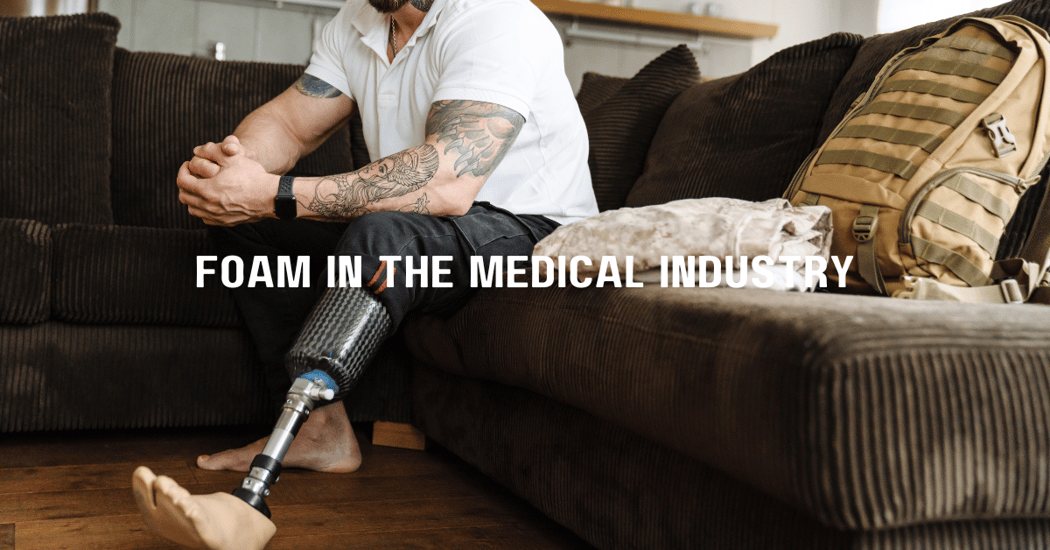
Impact of Foam Materials in the Medical and Pharmaceutical Industries
Venture into the remarkable world of foam materials and their essential role in transforming the medical and pharmaceutical industries. At Sterling Manufacturing & Distributing, we recognize the unique challenges faced by these sectors, such as ensuring patient safety, equipment protection, and compliance with strict industry standards. To cater to these diverse requirements, we are committed to providing exceptional, customized foam solutions tailored specifically to the medical and pharmaceutical fields.
In this comprehensive guide, we will uncover the various applications and benefits of foam materials like polyurethane, polyethylene, and EVA foam in the medical and pharmaceutical industries. From specialized medical equipment protection and packaging to advanced wound care products and surgical support, foam materials offer versatile, innovative, and reliable solutions that have a significant impact on the medical and pharmaceutical sectors.
Moreover, we will discuss the essential factors to consider when incorporating foam materials into your medical and pharmaceutical projects, including material selection, compliance with industry regulations, and effective implementation strategies. Join us on this captivating journey to discover the extraordinary influence of polyurethane, polyethylene, and EVA foam materials in the dynamic medical and pharmaceutical industries.
Protective Packaging and Equipment Solutions with Foam Materials in the Medical and Pharmaceutical Industries
Foam materials, such as polyurethane, polyethylene, and EVA foam, offer exceptional protective packaging and equipment solutions in the medical and pharmaceutical industries:
1. Specialized Medical Equipment Protection: Foam materials provide superior protection and cushioning for sensitive medical equipment, ensuring safe transportation and storage. Custom foam inserts can be designed to fit specific equipment models, preventing movement and impact damage, and ensuring device functionality and patient safety.
2. Pharmaceutical Product Packaging: Foam materials can be used to create protective packaging solutions for pharmaceutical products, such as diagnostic kits, medication packaging, and temperature-sensitive drug transport. By offering a controlled environment with optimal cushioning and insulation properties, foam materials safeguard the integrity of pharmaceutical products during transportation and storage.
Enhancing Patient Care and Comfort with Foam Materials
Foam materials contribute significantly to improving patient care and comfort in the medical and pharmaceutical industries:
1. Advanced Wound Care Products: Foam materials such as hydrophilic polyurethane and silicone foam play a crucial role in creating advanced wound care products. These materials promote a moist wound healing environment, provide cushioning, and absorb exudate, facilitating a faster and more comfortable healing process for patients.
2. Surgical Support and Positioning: Foam materials are often used in surgical support and positioning aids, such as surgical headrests, arm boards, and body positioners. Offering excellent pressure distribution and comfort, these foam solutions reduce the risk of pressure injuries and ensure optimal patient positioning during medical procedures.
Innovative Applications of Foam Materials in the Medical and Pharmaceutical Industries
Foam materials enable the development of innovative applications within the medical and pharmaceutical sectors:
1. Prosthetics and Orthotics: Foam materials are frequently used in prosthetic and orthotic devices, providing a lightweight and comfortable interface for patients. These materials offer customized cushioning, support, and shock absorption, promoting enhanced mobility and comfort for those who rely on prosthetic and orthotic devices.
2. Cleanroom Foam Solutions: Certain foam materials, such as closed-cell polyethylene foam, can be utilized in cleanroom environments for tasks like cushioning, sealing, and insulation. These foam materials boast low particulate generation and excellent chemical resistance, making them ideal for use in controlled environments where contamination risks must be minimized.
Ensuring Compliance with Medical and Pharmaceutical Regulations
Navigating and ensuring compliance with medical and pharmaceutical regulations is a crucial consideration when implementing foam materials in these industries:
1. Biocompatibility and Sterilizability: Foam materials employed in the medical and pharmaceutical industries must be biocompatible and sterilizable by standard methods such as autoclaving, gamma irradiation, or ethylene oxide. Ensuring foam materials meet these criteria safeguards patients and maintains the integrity of medical devices and pharmaceutical products.
2. Material Selection and Performance Properties: Effective material selection is paramount when incorporating foam materials into medical and pharmaceutical applications. Material performance properties such as density, compression, tensile strength, and chemical resistance must all be considered, ensuring compliance with regulations and desired application outcomes.
Collaborating with Expert Foam Material Suppliers for Medical and Pharmaceutical Applications
Cooperation with expert foam material suppliers, such as Sterling Manufacturing & Distributing, can provide vital knowledge and resources to achieve successful medical and pharmaceutical applications:
1. Customized Foam Solutions: Partnering with experienced foam suppliers can grant access to a vast range of customized foam solutions to accommodate specific medical and pharmaceutical application requirements. Expert foam suppliers can offer insights and recommendations on foam materials tailored to the unique needs of medical and pharmaceutical applications.
2. Validated Manufacturing Processes: Collaborating with foam material suppliers that employ validated manufacturing processes can ensure that medical and pharmaceutical foam products meet stringent quality and regulatory standards. By partnering with skilled suppliers, organizations can be confident that their foam solutions consistently maintain the highest quality and performance levels.
Polyurethane, polyethylene, and EVA foam materials are key to enhancing safety, efficiency, and patient care in the medical and pharmaceutical industries by providing advanced protective packaging solutions, innovative applications, and ensuring compliance with strict industry standards. By understanding the numerous applications and benefits of foam materials, medical and pharmaceutical professionals can unlock their full potential to address the unique and evolving challenges these industries face.
At Sterling Manufacturing & Distributing, we specialize in supplying high-quality, customized foam materials designed to meet the specific needs of the medical and pharmaceutical industries. Contact us today to discuss your unique medical and pharmaceutical requirements and explore tailored foam solutions for your projects. Together, let’s harness the extraordinary power of foam materials to revolutionize patient care and improve lives across the globe!

Leave a Comment
Your email address will not be published.